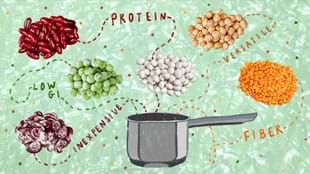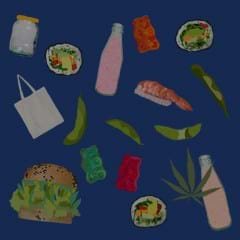It’s true, the word ‘legumes’ doesn’t sound super sexy. And it probably doesn’t help that the foods in this family – including lentils, chickpeas, peas, beans – have long been associated with the tasteless, boring vegetarian food of the past. But times are changing, and these humble plant foods are pretty useful in a super diet.
Pulses and legumes are favorites of nutritionists and public health bodies, and tend to pop up in healthy eating advice around the world. Legume is simply the overarching term given to this plant family, while pulses are the sub-group that are harvested for their edible seeds.
Legumes include all members of the pea family, along with soybeans and peanuts. The pulses family includes chickpeas (garbanzo beans), lentils, peas, broad (fava) beans, mung beans and soybeans.
SO WHY SHOULD WE ALL BE INCLUDING THEM IN OUR DIET?
They’re high in protein: Legumes are one of the best sources of plant-based protein, which is why many of the meat alternatives that are now popular are made from them. A cup of cooked brown lentils, for example, contains about 18 grams of protein; about the same as 100 grams of white fish.
They’re full of fiber: Legumes are a fiber powerhouse. They contain soluble and insoluble fiber, both of which are vital to our gut health. Evidence shows the more fiber we consume, the more we lower our risk of many diseases, including cancers, heart disease, high cholesterol and blood sugar, and obesity. Aim for around 30 grams a day – ten grams would come from that cup of cooked lentils.
They’re full of other good things: Legumes also pack in a useful amount of low-GI carbohydrate. And they contain iron, folate, magnesium and potassium.
They’re inexpensive: Compared to most other forms of protein, legumes are great value, especially when you buy them raw and prepare them yourself. Even in the pricier canned form, they’re still a steal.
They’re versatile: Legumes feature prominently in the cuisines of the world’s healthiest people, and are a staple of the Mediterranean diet. They can be prepared in lots of different, delicious ways, both on their own and combined with small amounts of animal food: Indian dhals and curries, the cassoulet of France; the Pasta e fagioli of Italy, Moroccan tagines or Harira – all sophisticated, classic dishes with layers of fabulous flavor and texture. Modern whole food cooks are doing new and clever things with legumes in everything from brownies to Buddha bowls.
There is one downside to the generally good news, and that is that legumes and pulses contain antinutrients – compounds such as phytic acid and lectins, which inhibit the absorption of some minerals, and can even be toxic. Lectins are a particular problem in red kidney beans, which if not properly prepared can make us very sick indeed.
Soaking, cooking, sprouting and fermenting counteracts the effects of antinutrients. Most legumes have to be prepared that way to make them edible. For example, red kidney beans must be soaked overnight, rinsed and cooked thoroughly for at least ten minutes. Canned lentils and beans have had that work done, so can be used straight from the can. And it’s possible to find quick-cook lentils and peas which have been pre-cooked and dried, so they cook safely in a few minutes.
So the effect of antinutrients in legumes is not a problem for most of us, especially if we’re regularly eating some animal protein, and we have a reasonably varied diet. If you’re vegetarian or vegan and eating large amounts of legumes frequently, it would pay to make sure at least some are consumed in fermented or sprouted form, and to keep an eye on your iron and zinc levels.
If you’re an athlete or exercising a lot and embarking on a vegan diet, it could be worth getting some professional nutrition advice to make sure you’re not compromising your performance. The evidence on vegan diets – which tend to feature lots of legumes – and athletic performance is limited, but most nutritionists would say it’s perfectly possible for athletes to do well on a well-planned vegan diet.
Legumes also have a bit of a gassy reputation, probably fairly, and are one of the so-called FODMAPs foods. They contain galacato-oligosaccharides (GOS), a fermentable carbohydrate that’s not well digested by many people (particularly those with Irritable Bowel Syndrome).
But there are ways even those who find legumes a challenge can enjoy them. It comes down to preparation: dried and cooked lentils and chickpeas can be problematic on a low-FODMAP diet, but canned versions are generally better tolerated, due to how they’re processed. If this is you, it’s worth checking your own tolerance and trying to include smaller amounts, in as wide a variety as you can tolerate, in your diet.
Niki Bezzant is a New Zealand-based food writer, editor and commentator. She is the founding editor (now editor-at-large) of Healthy Food Guide magazine, and is currently president of Food Writers New Zealand and a proud ambassador for the Garden to Table program which helps children learn how to grow, cook and share food. She is a member of the Council of Directors for the True Health Initiative, a global coalition of health professionals dedicated to sharing a science-based message of what we know for sure about lifestyle and health.
Illustration by Anieszka Banks.








